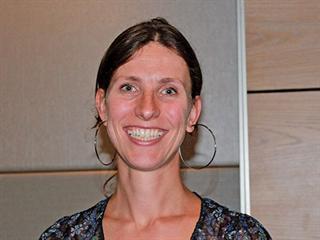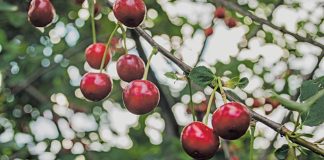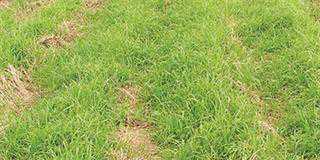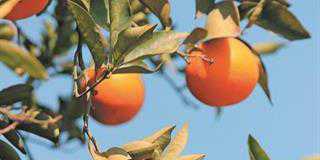
Studies show that a sow that loses too much weight during her first lactation is likely to produce smaller litters in her subsequent pregnancies. By focusing on management and nutrition, a producer could optimise the piggery’s reproductive performance. “Half of all sows have difficulty in farrowing the desired number of piglets in their second litter in a phenomenon called the Second Litter Syndrome,” explains Dr Lia Hoving.
“In addition, if the sow doesn’t conceive at the first insemination after weaning, her farrowing rate tends to be lower thereafter. If the second litter is of the desired size, the trend will continue in subsequent litters. So by ensuring the correct litter size in second parity sows, a producer can improve the whole farm’s performance.” Hoving’s PhD research found that preventing too great a weight loss during a sow’s first lactation was crucial to increasing the litter size over the course of her reproductive life.
“Sows are physiologically relatively young, with low body reserves at first farrowing. It takes a sow up to three litters to reach her mature body weight and constitution. If she doesn’t eat enough during her first lactation, she draws on her body fat reserves, and perhaps body protein, to produce milk.”
This results in weight loss. “Excessive weight loss can then impair the development of the follicles and reduce egg quality, affecting the subsequent farrowing rate, litter size and litter quality,” she told farmers at a South African Pork Producers’ Organisation (Sappo) Symposium in September. “A weight loss of up to 13% is acceptable during lactation, but make room for weight recovery during the following gestation period. A higher weight loss will have a negative effect on reproduction.”
Measurement
To get a complete picture of body condition, Hoving recommends weighing the sow and measuring her back fat around farrowing and weaning, with the same employee doing so each time. “Weight loss is strongly correlated with subsequent reproductive performance. Used in combination with back fat measurements, it is a great tool for the producer to assess body condition. The information tracks changes in the sow’s body, enabling appropriate management action when necessary to optimise her reproductive performance.”
Management
A producer has several management options to limit weight loss, and increasing feed intake seems to be the most obvious. The temperature in the farrowing room is often 23°C to 24°C, the optimum for piglet survival. However, a sow eats less at this temperature, her intake decreasing by 0,17kg for every 1°C increase in environmental temperature above 16°C.
“So, firstly optimise the temperature in the farrowing room,” Hoving advises. “Insulating the piglet nest enables it to be decreased to between 18°C and 20°C, close to the optimum for both sows and piglets. At a higher temperature, the sow eats less and loses weight.” Slow cooling systems can also increase feed intake.
“Calculate a lactating sow’s feed requirements according to her weight and the number of piglets suckling. This will differ from farm to farm, so consult your feed advisor. Generally speaking, the sow ration should be more concentrated, with a higher energy and amino acid content compared with a gestation diet, and could include constituents, such as fat, that produce the least amount of internal heat when digested,” she says.
Good quality drinking water is a must. “Water and feed intake are correlated. Each drinking nipple should provide 2,5l/ min when all sows are drinking. It is worth regularly checking this rate.”
Lactation
Reducing the lactation burden on young sows will also prevent excessive weight loss. “Introduce creep feeding for piglets, using dry or liquid feed. Dry creep feed – used from four days after birth – prepares their digestive system for the change from milk to dry feed after weaning. Liquid creep feed can be introduced as early as two days after farrowing. They won’t eat much, but will learn the taste and, by day seven, eat more. Milk replacer increases growth and can reduce weight loss during lactation,” Hoving says.
The second option is to reduce the number of piglets suckling. “Up to 11 piglets will generally be no problem for a sow, but more might be difficult. Try split weaning, by weaning part of the litter in the last lactation week, or try intermittent suckling. Since results are variable, these are not the preferred option and therefore not advised.” Another is to reduce the lactation period to three weeks. “However, we often see problems with longer weaning to insemination intervals,” she cautions.
Development
Optimising gilt development can be a buffer against first lactation weight loss and could possibly increase the size of the second litter. “Well-developed gilts can handle lactation weight loss better, with higher performance throughout, than less developed gilts can. A well-developed gilt is likely to eat more during lactation than a less-developed one,” explains Hoving.
The gilt should not be too fat. “An over-fat gilt tends to produce less milk and lose more weight during lactation, leading to early culling.
“If she is too thin, she will also be culled early due to her small litter and low milk yield.” Every age has an optimal weight. At the commonly used target age of between 210 and 240 days at first insemination, the typical weight is 140kg. Weight at first weaning can also affect sow production. “A body weight of less than 170kg at first weaning can negatively affect performance in subsequent litters. Know their weights and back fat measurements, and feed accordingly,” she adds.
Producers should also aim for a smooth transition from gestation to lactation.
“Gestational feeding can be increased by offering bulky feed once a day to extend the stomach so the gilt is able to take in more feed during lactation to counteract weight loss,” stresses Hoving. By optimising the reproduction of young sows, a producer can benefit from higher production in subsequent litters. “Gain insight into the body condition of the sows and gilts, and take appropriate action to ensure they are at their optimal weight at key stages,” Hoving concludes.
Phone Dr Lia Hoving on +31 651 502 836 or email [email protected].













